The green grass of your lawn may turn white due to a disease called “Powdery Mildew” or “Gray Snow Mold.” There’s nothing to worry about, but it will steal the appearance of your attractive lush green lawn to some extent till you eradicate the problem.
If you notice white patches on the lawn and wondering why is my grass turning white?, they may be due to Gray Leaf Spot, Fusarium Patch, and Fusarium Blight. An organic compound Mesotrione, in herbicide, may also contribute to the effect of grass turning white.
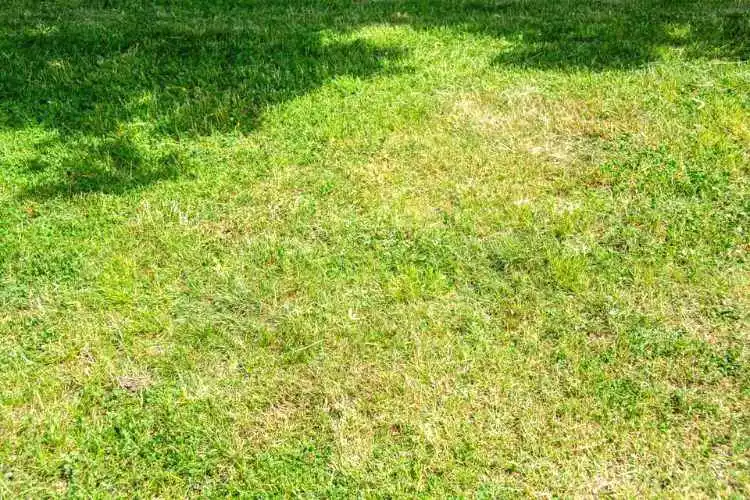
The grass may also turn white due to stress and poor maintenance. Your grass may take a lighter shade than it should take if you are undercutting, overcutting, or underwatering your lawn. Damaged mowers, drought, soil deficiency, and fertilizer burns are a few factors to turn the grass white.
If you are worried about the grass in your lawn turning white, you have arrived at the right place. Our detailed research on the topic and the solutions we gathered will help you to fix this problem most appropriately.
How to Identify The Signs of White Grass?
The appearance of dusted flour all over your grass indicates Powdery Mildew infection. Gray and white patches all over your grass signify Gray Snow Mold.
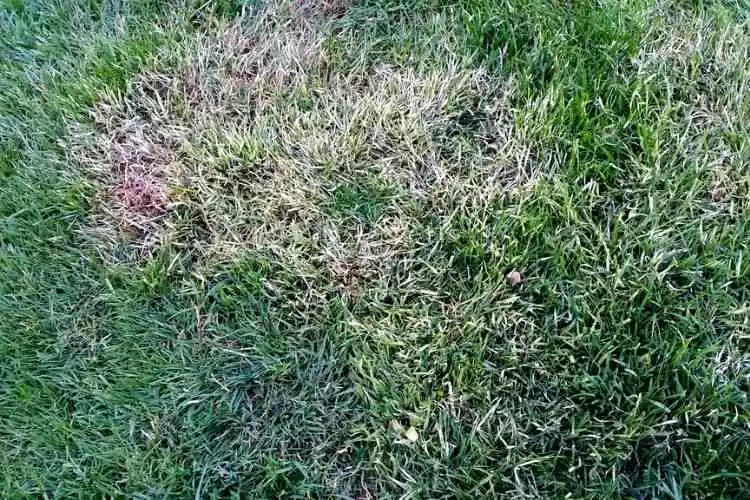
Apart from the above, if you notice the discolored grass, it is due to Mesotrione. A damaged mower will leave the glass blades to appear whitish-greyish, giving an appearance of white grass.
The tips of glass blades may appear whitish due to drought or dried soil. White strips on the glass blades represent the effects of fertilizer burns.
Lack of trace mineral iron in the soil results in white-colored bleach spots appearing on the glass blades.
Why is my grass turning white?
You might get disappointed after noticing your grass turning white. The appearance gives an ugly look to your lawn, and you might wonder what went wrong. Thankfully the whiteness of the grass doesn’t mean it is dead.
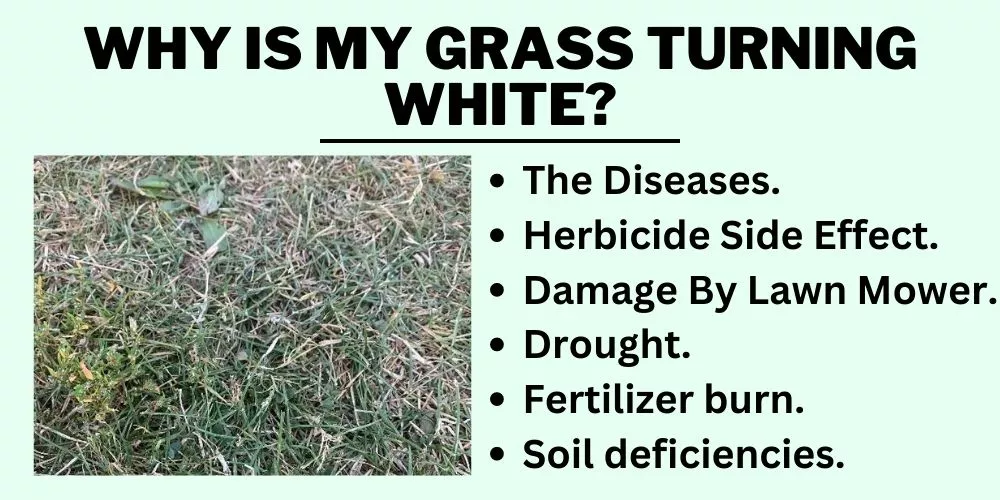
Your lawn isn’t dead if you notice its crown is whitish or off-white. If the lawn looks dry and brown and the blades seem to get brittle from top to bottom, then we can say the grass is dead. You should look for the reasons I explained below if you are wondering “why is my grass turning white?”
1. The Diseases
Powdery Mildew
This disease is the most common reason to turn your grass white. White patches appear on the glass blades, substantially degrading the lawn’s sheen. A fungus, Erysiphe Graminis, is responsible for the dusty white coverings.
A relatively high humidity above 90% and a warm temperature between 60° F – 70° F favor the fungus significantly. Low light intensity also strengthens the fungus. That’s the reason the areas under shade may get infected with powdery mildew.
Powdery Mildew will occur only in warm and dry weather. During favorable conditions, powdery spores start appearing on the grass blades. Powdery mildew attacks mostly the new/young/developing grass.
A few varieties of turfgrass, such as Kentucky Bluegrass are more vulnerable to this disease.
Gray Leaf Spot
White or bleached spots appear on grass blades due to Gray Leaf Spots. Pyricularia Grisea, a fungus, is responsible for this disease. Warm and high humidity conditions are favorable for this fungus.
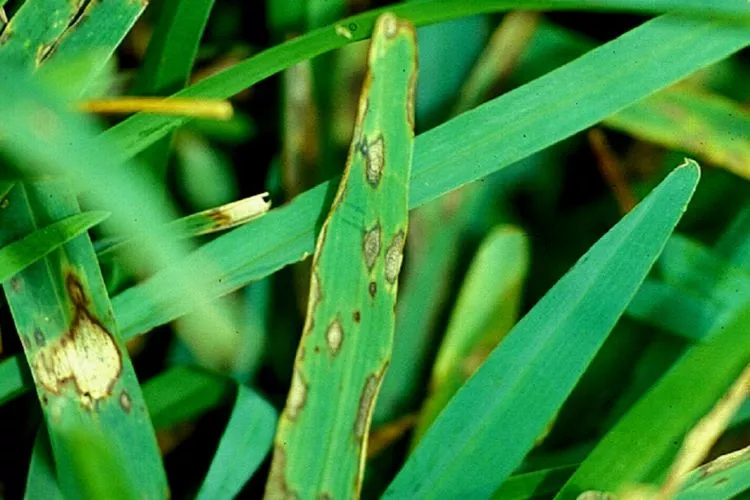
It also thrives on overfertilized and over-watered lawns. You can also notice dark grass blade edges along with whitish spots. St. Augustine grass is a common victim of Gray Leaf Spot disease.
Fusarium patch and Fusarium blight
These two diseases are also due to fungal organisms. You may notice the grass appearing whitish or bleached. Fusarium blight mainly affects Kentucky bluegrass. Initially, you can see gray-green circles on the grass, later developing into bleached patches.
The Fusarium patch mainly infects annual bluegrass, creeping bentgrass, and Kentucky bluegrass. In the earlier stages, the grass blades become soggy and then appear bleached as the infection grows older.
Lawns having heavy thatch mostly favor these diseases. Favorable weather for the Fusarium patch is cold weather, while that of the Fusarium blight is warm.
Gray Snow mold
Another fungal disease that turns your grass white is Gray Snow Mold. It happens generally during the snow-melt duration. You will notice white and gray patches on your grass.
This disease can happen only if snow covers your lawn for at least 60 days. This disease may be severe if the ground remains in an unfrozen state before snow covers it completely. Mulch can facilitate the spread of mold.
Lawns having high levels of nitrogen are affected majorly by Gray Snow Mold. If your lawn was under snow for over 60 days, you are likely to notice this disease in the spring season.
The infection of Gray Snow Mold will take a break when the thermometer races between 45 and 60 degrees. The soil will lose its moisture and start drying out. You can meanwhile rake your lawn to remove the whitish grass to dry the remaining ones quickly. You can also sow new grass seeds to overcome the damage of those grass-removed spots.
2. Herbicide Side Effect
Herbicides help the grass grow by attacking weeds and helping it grow appropriately. Many times if not applied in the correct proportion, it may bleach out your grass, giving it a discolored and whitish appearance.
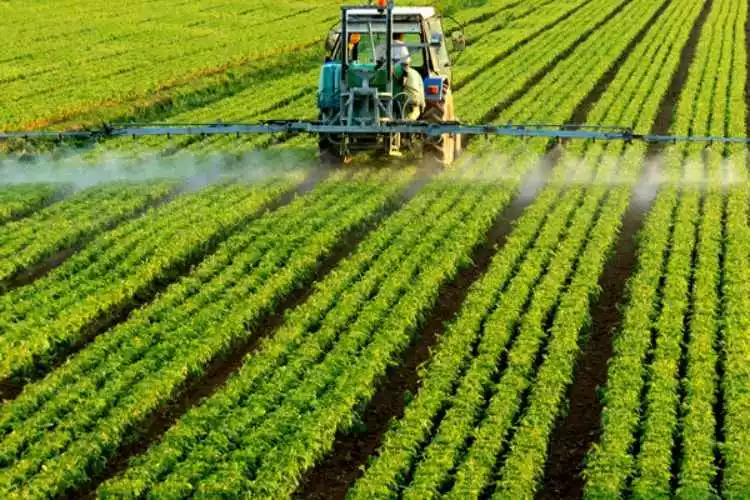
Ensure you mix the herbicide in the right proportions following the manufacturer’s instructions verbatim.
An organic compound from herbicide, Mesotrione is known to block enzymes in plants, which is vital in creating chlorophyll. A low amount of chlorophyll leaves the grass turning white instead of green.
3. Damage By Lawn Mower
A lawn mower may be the reason for the discoloration of your grass. Excess cutting of the grass may result in a turf being unable to photosynthesize effectively, failing to energize itself.

It weakens the grass further and the color fading occurs in the blades, giving a whitish-grey appearance. A lawn mower with a blunt blade may also result in the grass blades appearing dull and white at the top.
4. Drought
An extended drought may result in the grass blades turning white. These conditions mainly occur in the case of regular droughts and dry soil due to the absence of rain.
Arid or semi-arid region natives should have an alternate arrangement to replenish their lawns with advanced irrigation systems to avoid this situation.
5. Fertilizer burn
White strips on the blades of your glass may be due to Fertilizer burns. Fertilizers are rich in mineral salts that pull moisture from the plants and soil. This process dehydrates the plant, leading to discoloration and turning white.
6. Soil deficiencies
If the soil lacks trace mineral iron and is alkaline, your grass may turn white.
How do you fix a sick lawn?
With painstaking activities, you can convert your white grass to lush green. Providing your grass with an ideal setting to grow is the solution. It will also help to reduce the recurrence of these instances in the future.
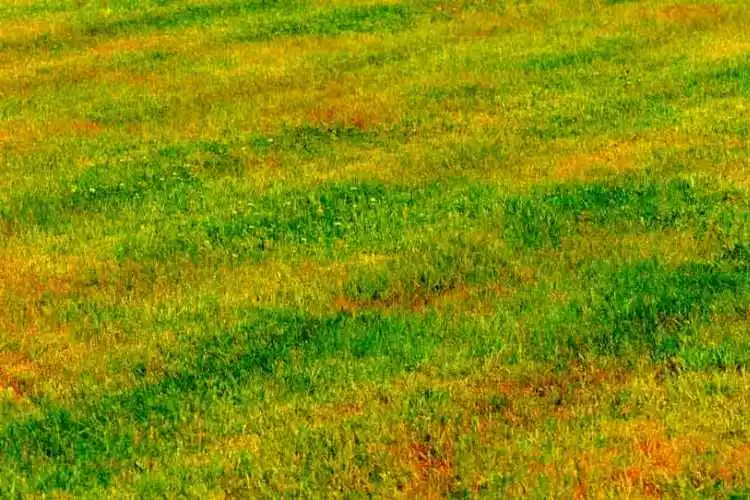
1. Examine Your Soil Properly
Check the quality of your soil. You can get it tested and analyzed in a test laboratory. You will get reports on the pH scale, any mineral deficiency, hydration levels, etc. Accordingly, you can reinforce your soil quality by using appropriate minerals or any corrective action suggested by the experts.
2. Apply a Good Quality fungicide
If powdery mildew is the cause of the whitening of the grass, treating the lawn with fungicide will significantly lessen or eliminate the illness.
The most efficient fungicides for treating powdery mildew are those containing sulfur, neem oil, and triforine. Baking soda (potassium bicarbonate) used with a light horticultural oil provides a safe, non-toxic substitute.
3. Adopt Better Mowing Practices
Ensure to cut the grass blades not more than 1/3 of their length. It will help the plant to photosynthesize better, allowing it to create substantial food for itself.
Also, check for the lawn mower’s blades and if they are blunt, get them sharpened on an urgent basis. Blade sharpening should be done after using it for 20-25 hours. Clean and precise cuts of the glass blades reduce their damage.
It’s wiser to replace the mower blades after every one or two seasons, based on how many times you use them.
4. Cut Back Your Nitrogen Fertilization and Use a High-Quality Fertilizer
Avoid using nitrogen-rich fertilizers as they facilitate the growth of powdery mildew and snow mold. Choose a high-quality fertilizer, or alternately use an organic type.

5. Apply a slow-release fertilizer evenly
Use organic and slow-release fertilizers in place of synthetic ones. These fertilizers will prevent grass burns, which turn them white. An appropriate fertilizer schedule will eliminate the risk of using excess fertilizer in your lawn.
6. Dethatch the lawn
Remove the thatches built on your lawns as they restrict sunlight needed by the plants for photosynthesis. Most fungal infections thrive in absence of sunlight and the same happens with your lawn.
7. Provide Proper Sunlight Exposure
Consider enhancing the intensity of light or increasing the number of hours received by the grass to avoid fungal infections. Cut down branches and canopy that form shade on your lawn so more sunlight reaches the grass.
8. Aerate Your Lawn
The aeration process is to perforate soil with tiny holes allowing air, water, and nutrients to reach grass roots. It facilities the roots to grow deeper, producing a stronger, vibrant lawn. Aeration is mainly done to facilitate and relieve soil compression.
9. Kill Weeds and Unwanted Insects
Use a high-quality herbicide to kill weeds and insecticide to kill unwanted insects. Ensure the herbicide and insecticide will leave no side effects on the lawn.
10. Grow the Grass a Bit Taller
Aerating your soil will help your lawn to grow ideally. Mowing your grass frequently will do the trick of growing the grass a bit taller. Once the grass is trimmed with the mower, the area at the top of the glass blades receives more sunlight leading to extra growth.
Mowers facilitate the grass to have a common level, so each grass blade receives enough sunshine and you also get a thicker lawn.
11. Dispose of Clippings Carefully
Once you cut your grass with the lawn mower, ensure they are safe to be disposed of. If they aren’t infected you can dispose of them in the lawn as the remaining grass can use nutrients and minerals from them for their growth. But if infected, dispose of them far away from the lawn.
12. Reseeding
The ideal season for reseeding your lawn is the fall. You will need to do this if the weeds are more than the grass seeds. First, you will need to remove the old grass and weeds. After selecting good-quality grass seeds, prepare the soil for reseeding.
Level up the ground by removing chunks of dirt. If the soil is too compressed, consider aerating it. The last step is to sprinkle grass seeds evenly using a branded spreader. Check no bare patch remains unseeded.
13. Adjust the soil pH to suit your turfgrass variety
Alkaline soil may be the reason for turning the grass white. Alkaline soils are low in iron content. You can alter the soil pH to have it acidic, in the range of 6.5 to 7.
You can add iron sulfate, elemental sulfur, sphagnum peat, and organic top dressing to lower your soil pH.
14. Proper Watering Schedule
Irrigate your lawn regularly to water adequately during the summer season. Ensure the soil receives water down up to 1″ to 1.5″ and remains soaked.
It should be mandatorily done as during summer the soil will dry up pretty fast, which could damage your lawn. Aerating the soil will also, as water and nutrients can reach up to the roots.
You May Also Find Useful: How to Keep Pavers From Sinking
Frequently Asked Questions (fAQs)
Can white grass turn green again?
Yes, white grass can be turned green again with some effort.
Does white grass grow back?
Dead white grass cannot grow back.
Will lawn fungus go away on its own?
Lawn fungus won’t go away on its own. It may slow down its pace, but needs to be removed with appropriate treatments.
How long does grass stay white after tenacity?
After tenacity, it is assumed the grass will stay white for 2-3 weeks before they die.
Conclusion
Grass turning white has many reasons. It may be due to fungal infection or side effects of the herbicide. Many times poor maintenance, damaged mower, etc. are also the reasons for grass getting whiter.
A grass having white patches or discoloration doesn’t look good. You need to take remedial actions immediately to maintain your lawn and look green, fresh, and vibrant.
Luckily, there are identifiable symptoms to conclude what the problem is and you can accordingly take suitable steps to restore your lawn.
